Advertisement
At MASS MoCA, artist Joseph Grigely shares his experience of being deaf
Resume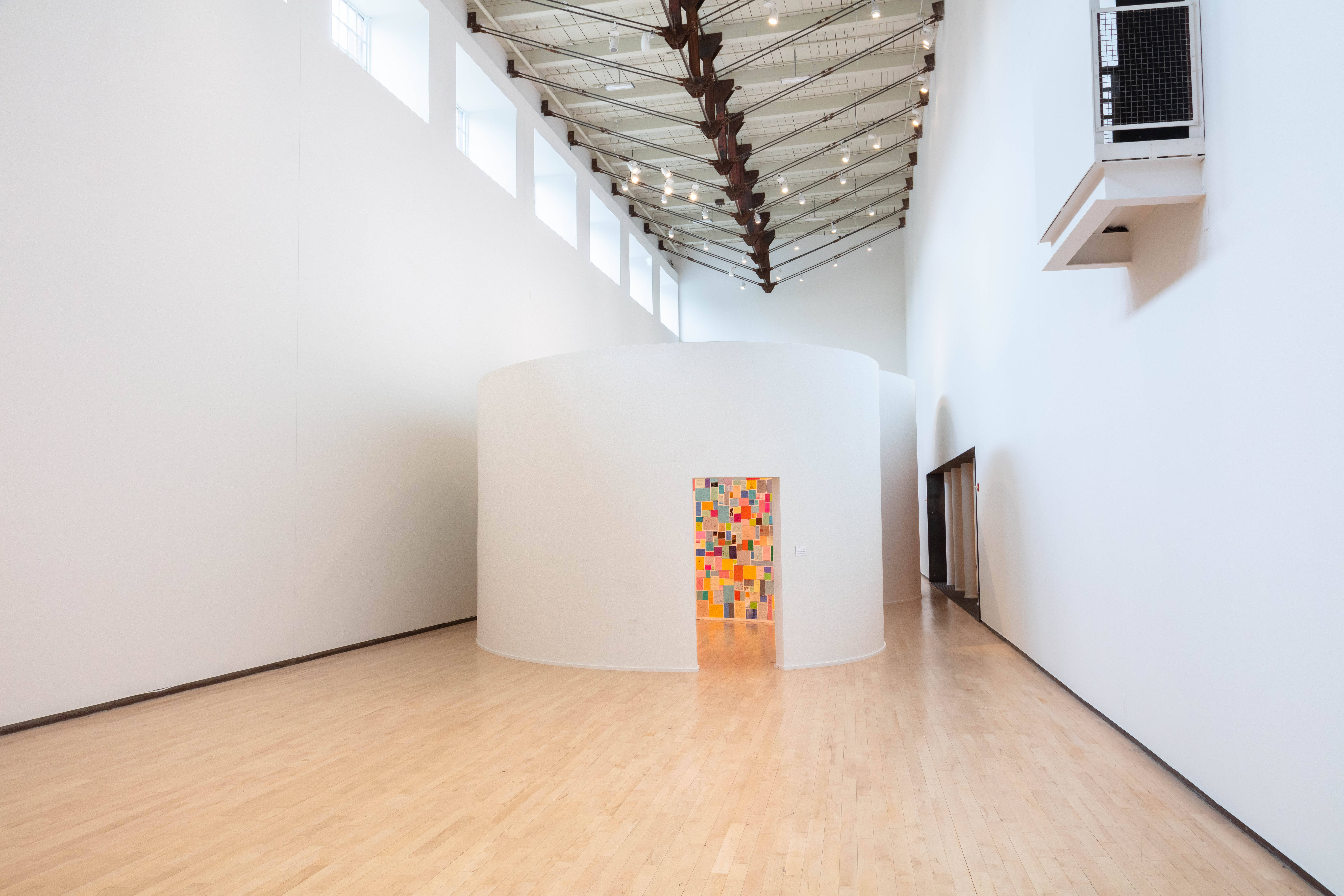
When people ask Joseph Grigely how he lost his hearing, he has two stories — one for each ear. As an infant, he lost hearing on one side after a severe fever. At the age of 10, he fell down about 15 feet during a game of King of the Hill and landed in such a way that a twig ruptured his eardrum. Grigley wrote about his experience in a 2022 essay for the Brooklyn Rail.
“As a deaf friend later said to me, what I lost in my hearing I gained in my deafness.” What he gained — the experience of being deaf — is the focus of a new solo exhibition at MASS MoCA in North Adams titled “Joseph Grigely: In What Way Wham?”
The centerpiece of the exhibit is a new work titled “White Noise.” It’s two towering, circular rooms that, from up above, would appear to look similar to an infinity symbol. The structures are 14 feet high and 27 feet long. Hand-written notes line the interior of the walls — one room is filled with colorful papers; the other, shades of white and beige. Each one of the notes is an artifact from Grigely’s life — a paper that someone passed to him in order to communicate with him over the course of decades.
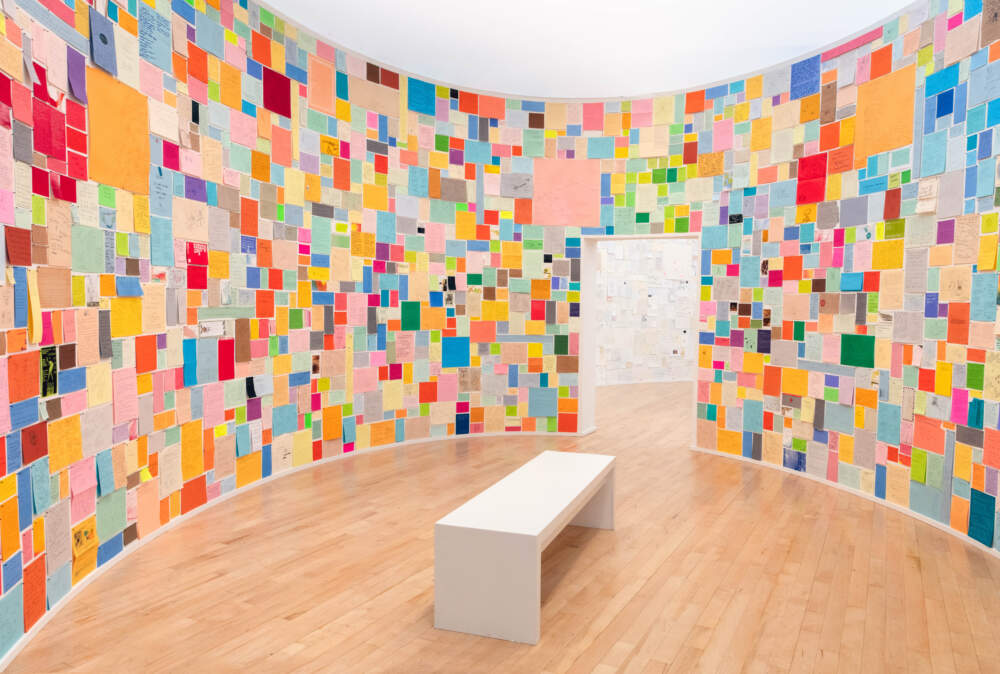
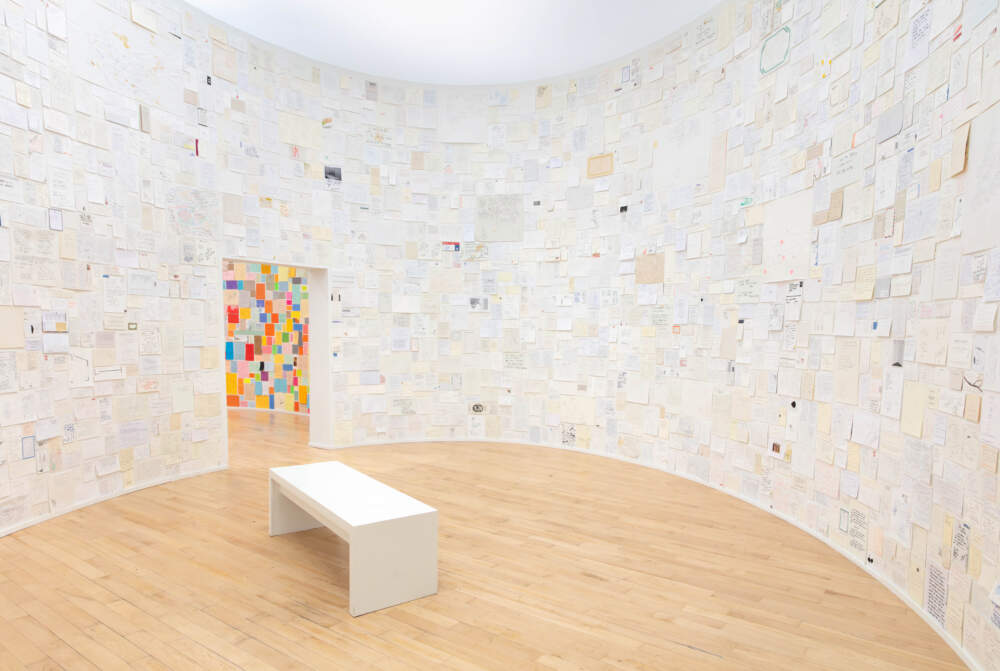
I stood inside “White Noise” with Grigely, his American Sign Language interpreter Amy Kisner and MASS MoCA chief curator Denise Markonish a few hours before the exhibit’s opening reception back in May. When I asked Grigely to describe “White Noise,” he stepped toward the portion of the wall closest to him and listed what he saw. He spoke quickly and with a rhythmic cadence as he described images people have drawn for him too. “A painting of a cricket. There's an upside-down martini glass. There's a panda. There's, let's see, there's a family of three bears. Mama bear, daddy bear, baby bear… And on all these papers, people have written stuff to me when we're having conversations.”
By holding onto these notes, Grigely presents the material form of spoken words that are often immaterial and dissipating as quickly as the soundwaves that carry them. As he stated in the exhibit’s brochure: “Imagine if every word we spoke became palpable and dropped from our lips...Think about what would happen, and the places we would find the residue of our words. Imagine scraps of language lying on countertops. Drawers full of sentences. Peelings of words in the sink."
Outside of “White Noise,” the exhibit also turns a focus toward the concept of communication and the hurdles that arise from communicating. There are framed screenshots of unhelpful TV Captions, such as a Democratic primary debate between then-presidential candidates Joe Biden and Bernie Sanders: “Why don't you tell the truth. We all make mismistakes.”
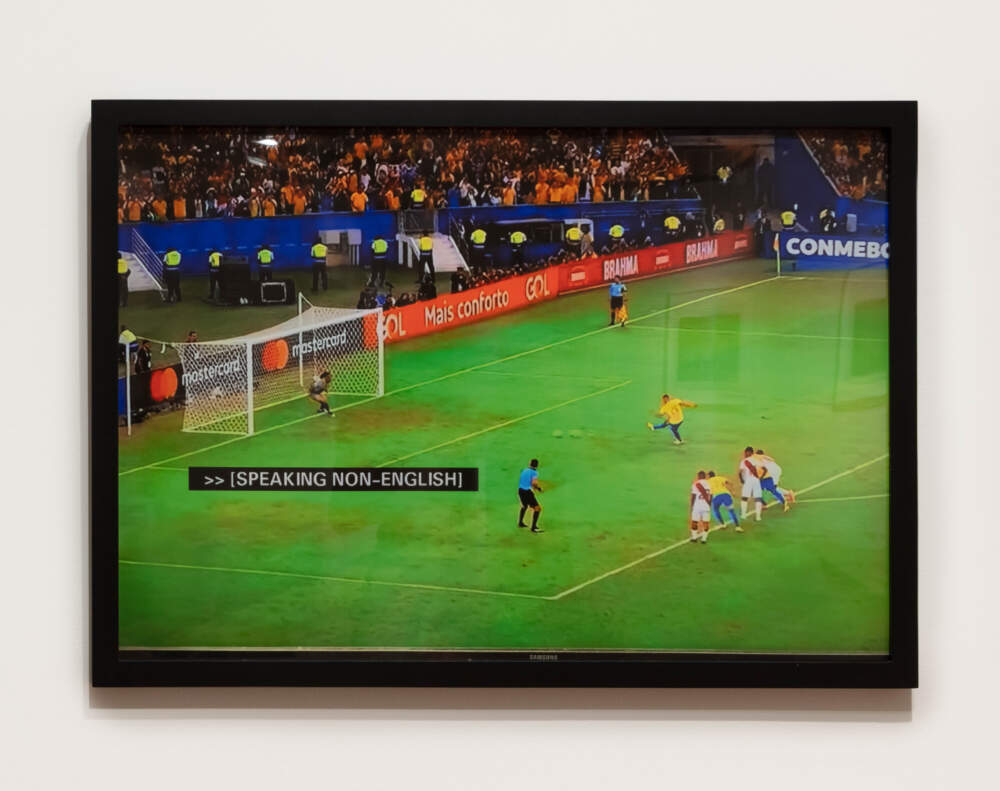
“In What Way Wham?” marks the first time the museum has curated audio descriptions that enhance the artwork for both seeing visitors and those who are blind. Additionally, the museum has a fleet of local members of the Deaf and hard of hearing community who will be leading tours in American Sign Language. Those tours are accompanied by a translator who will communicate the tour guides’ commentary into English for general audiences who might not know ASL.
Before the exhibit opened, Grigely walked through the exhibit with the guides, answering questions about the art and sharing an outlook on the goal of these ASL tours. Cai Steele is one of those guides, and he’s also an artist who is DeafBlind. He wrote about his reflections and hopes for the exhibit in an email. “I hope that I can make clear, for hearing people what a Herculean chore access to even a mundane conversation can feel like when you are Deaf,” he wrote. “Make no mistake, I love my silent world. I cherish it. I just wish that sharing my knowledge, studies, and passions was easier with all of you who live in the ocean of sound. I hope tours through Joseph Grigely's exhibit can convey that as well.”
Grigely played a key role in advising MASS MoCA in how to approach this new expansion of accessibility programming. “Here was an artist who could help us figure out where to start,” said Markonish. “Somebody who has been fighting for this for decades and, and who you can trust to say, like, these are the right ways to do it.”
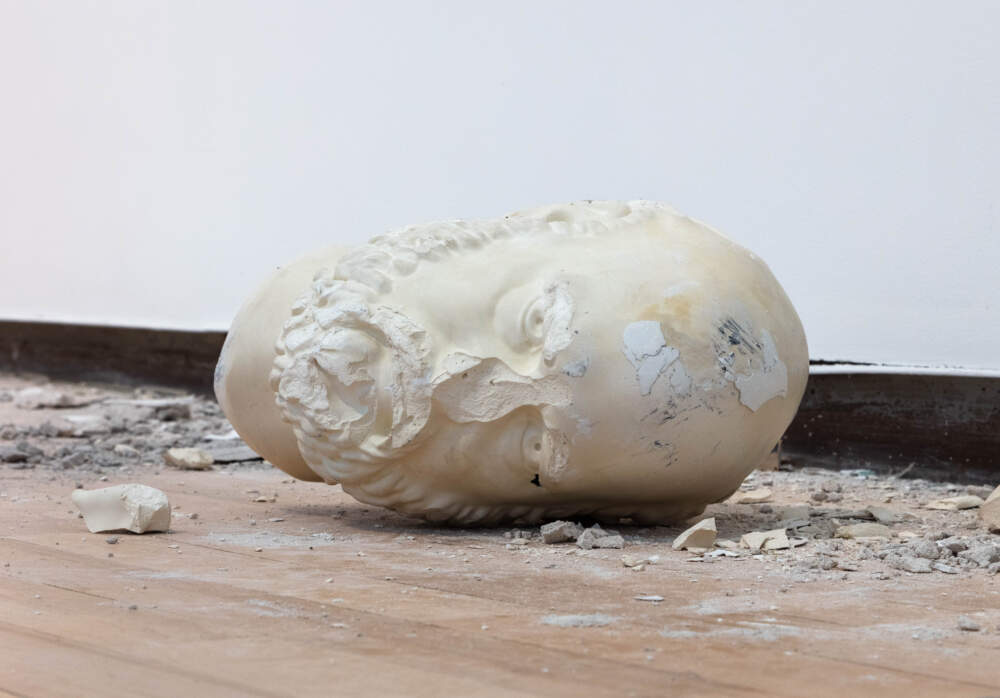
For his piece titled “Between the Walls and Me,” Grigely smashed a plaster bust of his own head against the walls of the museum. MASS MoCA curators and Grigely recruited Andy Slater, a Chicago-based sound artist who is blind, to develop the creative approach to the audio descriptions, and the description of this particular work includes sounds of Grigely installing the piece. “I suggested that he recorded himself doing that because that is a wonderful part of access” said Slater, who in addition to being an artist is also an advocate for accessibility. “Being able to hear the sound of the stuff smashed against the wall, understanding the impact and the power he put behind it, hearing all the drywall fall on the ground and knowing where it landed on the floor and the gallery and that sort of stuff I think could be a really cool creative way of describing the thing sonically.” (Listen to the audio description here.)
In an exhibit about the challenges of communicating while deaf, Grigely adeptly captures and puts this experience on display. That care for language is something that Grigely brings to all of his conversations, says Kisner, reflecting on her years signing for Grigely. “Every deaf person has a different way of wanting their interpretation provided because they value different aspects of language or connection with the people they're talking to,” she says. “Joseph has incredible care and precision for language. I'm very careful about the sign choices that I make. And in a very similar way, I see some of his way of moving through the world shown here because he so cherishes those little fragments of conversation. It's the same when I sign for him. It's not just about the meaning or the intent, it's also about the specificity of the words.”
Within these artifacts, Grigely has collected a wide spectrum of human emotions, including frustration, isolation, joy, compassion, laughter and more. Through these sentiments on paper, Grigely highlights the human need for connection and the means people use to achieve it.
"Joseph Grigely: In What Way Wham?" is on view at MASS MoCA through March 31.
This segment aired on October 3, 2023.
